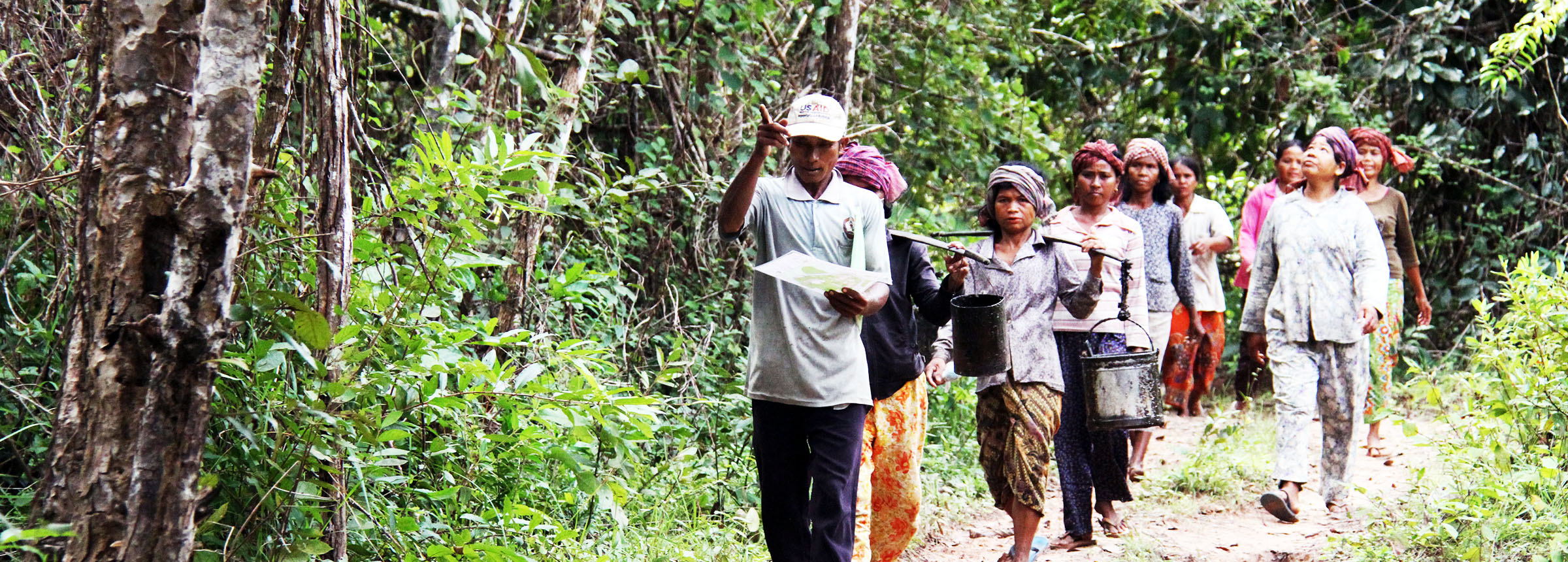Search Results for 27

Nitrogen Fixing Tree Research Reports, Volume 9, 1991
page
Forest, Farm, and Community Tree Network (FACT Net) Winrock International Institute for Agricultural Development Internet: forestry@winrock.org ************************************************************ FACT NET CANNOT PROVIDE COPIES OF ARTICLES. Price for FACT Net is US$5 per volume plus shipping/handling. ************************************************************ Table of Contents Section I. CONTRIBUTED PAPERS INVOLVING SEVERAL NFT GENERA INDIA Bangarwa, K.S., R.R. Siogb, and Ravi Kumar. Survival […]
Nitrogen Fixing Tree Research Reports, Volume 4, 1986
page
Forest, Farm, and Community Tree Network (FACT Net) Winrock International Institute for Agricultural Development Internet: forestry@winrock.org ************************************************************ FACT NET CANNOT PROVIDE COPIES OF ARTICLES. Price for FACT Net is US$5 per volume plus shipping/handling. ************************************************************ TABLE OF CONTENTS Section 1. CONTRIBUTED PAPER p. 1 AUSTRALIA Crowley, G.M. Factors affecting regeneration in north Queensland populations of […]
Nitrogen Fixing Tree Research Reports, Volume 3, 1985
page
Forest, Farm, and Community Tree Network (FACT Net) Winrock International Institute for Agricultural Development Internet: forestry@winrock.org ************************************************************ FACT NET CANNOT PROVIDE COPIES OF ARTICLES. Price for FACT Net is US$5 per volume plus shipping/handling. ************************************************************ TABLE OF CONTENTS Section 1. CONTRIBUTED PAPERS p. 1 CHINA Zhou, Xiang-quan. Nodulation of Caesalpinioi-deae in Nanjing. p. 1 CONGO […]
LEUCAENA RESEARCH REPORTS, Volume 10, 1989
page
Forest, Farm, and Community Tree Network (FACT Net) Winrock International Institute for Agricultural Development Internet: forestry@winrock.org ************************************************************ FACT NET CANNOT PROVIDE COPIES OF ARTICLES. Price for FACT Net is US$5 per volume plus shipping/handling. ************************************************************ TABLE OF CONTENTS Section 1. CONTRIBUTED PAPERS ON THE LEUCAENA PSYLLID p. 1 Leucaena psyllid trial in the Philippines Escalada, […]
LEUCAENA RESEARCH REPORTS, Volume 5, 1984
page
Forest, Farm, and Community Tree Network (FACT Net) Winrock International Institute for Agricultural Development Internet: forestry@winrock.org ************************************************************ FACT NET CANNOT PROVIDE COPIES OF ARTICLES. Price for FACT Net is US$5 per volume plus shipping/handling. ************************************************************ TABLE OF CONTENTS Section 1. CONTRIBUTED PAPERS p .1 ARGENTINA Ayerza, R. Introduction of Leucaena leucocephala in the arid chaco […]
LEUCAENA RESEARCH REPORTS, Volume 4, 1983
page
TABLE OF CONTENTS Section 1. CONTRIBUTED PAPERS ………………………………………………………………. 1 AUSTRALIA Bray, R. A. Forage yield of Leucaena diverstfolia …………………………………………….. 1 Jones, R. J. and W. H. Winter. Serum thyroxine levels and liveweight gain of steers grazing leucaena pastures ………………………………………………. 2 Versace, G. Propagating leucaena by grafting ………………………………………………… 3 BRAZIL Sanzonowicz, Claudio and Walter Couto. Effect […]
LEUCAENA RESEARCH REPORTS, Volume 3, 1982
page
TABLE OF CONTENTS Section 1. CONTRIBUTED PAPERS ………………………………………………………………. 1 AUSTRALIA Bray, R. A. Forage yield of Leucaena diverstfolia …………………………………………….. 1 Jones, R. J. and W. H. Winter. Serum thyroxine levels and liveweight gain of steers grazing leucaena pastures ………………………………………………. 2 Versace, G. Propagating leucaena by grafting ………………………………………………… 3 BRAZIL Sanzonowicz, Claudio and Walter Couto. Effect […]
LEUCAENA RESEARCH REPORTS, Volume 2, 1981
page
Forest, Farm, and Community Tree Network (FACT Net) Winrock International Institute for Agricultural Development Internet: forestry@winrock.org ************************************************************ FACT NET CANNOT PROVIDE COPIES OF ARTICLES. Price for FACT Net is US$5 per volume plus shipping/handling. ************************************************************ TABLE OF CONTENTS Section 1. FEATURE ARTICLES p.1 COLOMBIA Hutton. E. Mark. Natural crossing and acid tolerance in some leucaena […]
FACT Net: Research Reports
page
LEUCAENA RESEARCH REPORTS, Volume 2, 1981LEUCAENA RESEARCH REPORTS, Volume 3, 1982LEUCAENA RESEARCH REPORTS, Volume 4, 1983LEUCAENA RESEARCH REPORTS, Volume 5, 1984LEUCAENA RESEARCH REPORTS, Volume 6, 1985LEUCAENA RESEARCH REPORTS, Volume 7, 1986LEUCAENA RESEARCH REPORTS, Volume 8, 1987*LEUCAENA RESEARCH REPORTS, Volume 9, 1988*LEUCAENA RESEARCH REPORTS, Volume 10, 1989LEUCAENA RESEARCH REPORTS, Volume 11, 1990LEUCAENA RESEARCH REPORTS, Volume 13, […]
Ziziphus mauritiana – a valuable tree for arid and semi-arid lands
page
FACT 98-03, June 1998 A quick guide to multipurpose trees from around the world The use of Ziziphus mauritiana in India can be traced back to as early as 1,000 BC. This species which is also known as ber, Indian jujube, Indian plum, or desert apple, is an ever-green, medium-sized, thorny tree, whose greatest quality […]